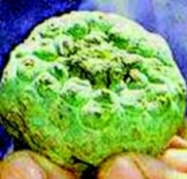
|
The Peyote Cultby Paul Radinfrom The Winnebago Tribe, pp. 340-78, ARBAE 37
|

|
The Peyote Cultby Paul Radinfrom The Winnebago Tribe, pp. 340-78, ARBAE 37
|
Peyote has never been a drug for thrill seekers. The small, hard cactus is difficult to obtain. It tastes vile, ingestion normally leads to painful vomiting, and the effects are more subtle than other psychedelics.
The Native American Peyote ceremony emerged at the turn of the 20th century, like the Ghost Dance, at a time when Native American culture was under much stress. It blended Christian and traditional beliefs, and used Peyote as a sacrament. The Peyote ceremony spread from the Southwest into the Plains and other culture regions. Participants reported a spiritual cleansing, and experienced healing effects, which may be the result of powerful natural antibiotics in Peyote.
This is one of the first ethnographic accounts of the Peyote ceremony. Paul Radin wrote this monograph, mostly consisting of first-hand accounts, as part of his 1925 ethnography of the Winnebago tribe, who live in Wisconsin. The Peyote 'Cult' did not die out as Radin thought it might, but grew into the Native American Church, which is still going strong today. This group fought the US legal system to get an exemption to use the cactus, which is a controlled substance, in their ceremonies.